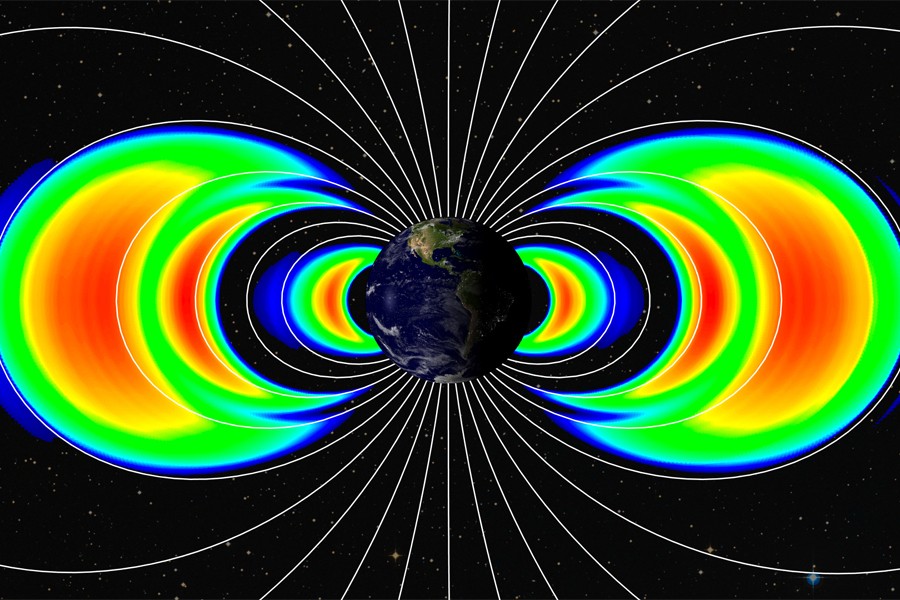NASA's Van Allen Probes mission, the first twin-spacecraft mission designed to explore Earth's radiation belts, has discovered a previously unknown third radiation belt around Earth, NASA announced today.

Image caption: A new radiation belt has been discovered around Earth. It is shown here using actual data as the middle arc of orange and red of the three arcs seen on each side of the Earth.
Image credit: JHUAPL/LASP
Previous observations of Earth's Van Allen belts have long documented two distinct regions of trapped radiation surrounding our planet. Particle detection instruments aboard the twin Van Allen Probes, built and managed for NASA by The Johns Hopkins University Applied Physics Laboratory in Laurel, Md., revealed the existence of this new, transient, third radiation belt. The storm probes mark the 65th and 66th spacecraft built and launched by APL since 1961.
The belts—named for their discoverer, former APL staff member and pioneering physicist James Van Allen—are critical regions for modern society, which is dependent on many space-based technologies. The Van Allen belts are affected by solar storms and space weather and can swell dramatically. When this occurs, they can pose dangers to communications and GPS satellites, as well as humans in space.
"The fantastic new capabilities and advances in technology in the Van Allen Probes have allowed scientists to see, in unprecedented detail, how the radiation belts are populated with charged particles, and will provide insight on what causes them to change, and how these processes affect the upper reaches of Earth's atmosphere," said John Grunsfeld, NASA's associate administrator for science in Washington.
Read more from Applied Physics LaboratoryPosted in Science+Technology









